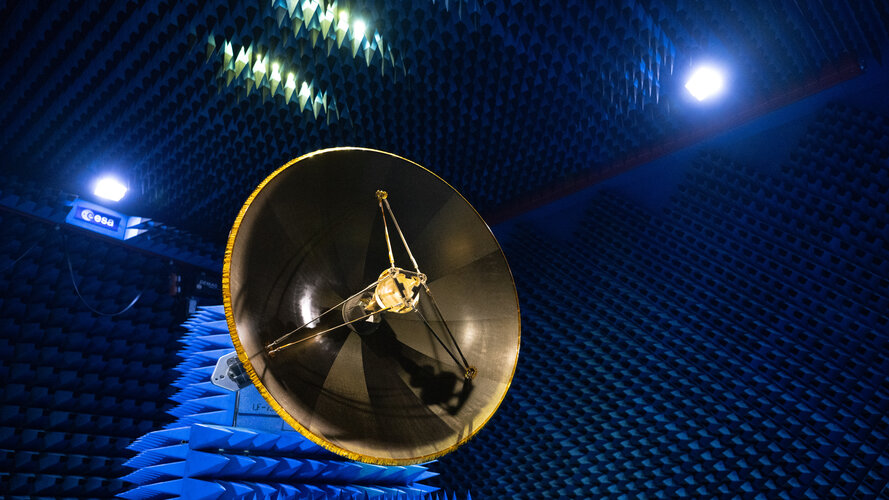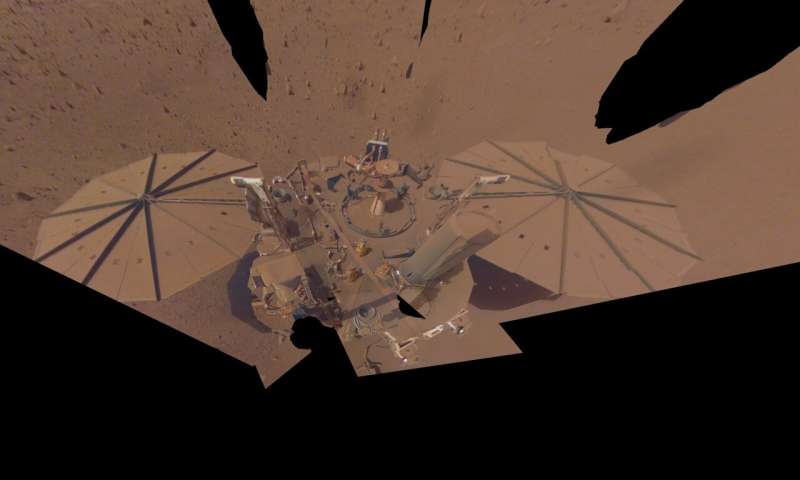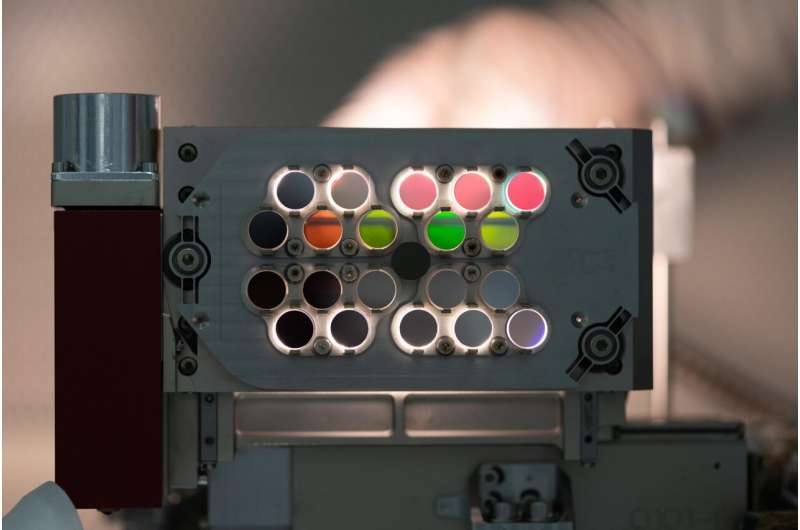
Copernical Team
Thursday, 22 December 2022 07:42
Exploration power for the Moon, Mars, and Beyond
Washington DC (SPX) Dec 22, 2022
 With Artemis, NASA looks to accomplish something unprecedented - exploration of the lunar South Pole. When astronauts reach their destination and establish a long-term presence, a unique challenge awaits.
Unlike Apollo missions, which were equatorial and had abundant sunlight, Artemis missions will operate in inhospitable conditions, including the lunar night cycle and permanently shadowed
With Artemis, NASA looks to accomplish something unprecedented - exploration of the lunar South Pole. When astronauts reach their destination and establish a long-term presence, a unique challenge awaits.
Unlike Apollo missions, which were equatorial and had abundant sunlight, Artemis missions will operate in inhospitable conditions, including the lunar night cycle and permanently shadowed
 With Artemis, NASA looks to accomplish something unprecedented - exploration of the lunar South Pole. When astronauts reach their destination and establish a long-term presence, a unique challenge awaits.
Unlike Apollo missions, which were equatorial and had abundant sunlight, Artemis missions will operate in inhospitable conditions, including the lunar night cycle and permanently shadowed
With Artemis, NASA looks to accomplish something unprecedented - exploration of the lunar South Pole. When astronauts reach their destination and establish a long-term presence, a unique challenge awaits.
Unlike Apollo missions, which were equatorial and had abundant sunlight, Artemis missions will operate in inhospitable conditions, including the lunar night cycle and permanently shadowed
Published in
News
Tagged under
Thursday, 22 December 2022 07:42
UK space regulator issues Virgin Orbit licenses ahead of UK launch
London, UK (SPX) Dec 22, 2022
 The UK Civil Aviation Authority has issued the final remaining licences to Virgin Orbit ahead of a planned UK launch after requirements were met within 15 months. The licences were issued following consent from Transport Secretary Mark Harper for Virgin Orbit's launch and range licence, meaning he is in agreement with the licensing decisions made by the UK Civil Aviation Authority.
Virgin
The UK Civil Aviation Authority has issued the final remaining licences to Virgin Orbit ahead of a planned UK launch after requirements were met within 15 months. The licences were issued following consent from Transport Secretary Mark Harper for Virgin Orbit's launch and range licence, meaning he is in agreement with the licensing decisions made by the UK Civil Aviation Authority.
Virgin
 The UK Civil Aviation Authority has issued the final remaining licences to Virgin Orbit ahead of a planned UK launch after requirements were met within 15 months. The licences were issued following consent from Transport Secretary Mark Harper for Virgin Orbit's launch and range licence, meaning he is in agreement with the licensing decisions made by the UK Civil Aviation Authority.
Virgin
The UK Civil Aviation Authority has issued the final remaining licences to Virgin Orbit ahead of a planned UK launch after requirements were met within 15 months. The licences were issued following consent from Transport Secretary Mark Harper for Virgin Orbit's launch and range licence, meaning he is in agreement with the licensing decisions made by the UK Civil Aviation Authority.
Virgin
Published in
News
Tagged under
Thursday, 22 December 2022 07:42
Northrop Grumman space navigation systems achieve galactic threshold
Falls Church VA (SPX) Dec 22, 2022
 When considering that a full calendar year has 8,760 hours and a commercial airliner can be in service for about 30 years (or around 165,000 flying hours), then achieving a continuous performance milestone of 65 million hours is truly out of this world - exactly where Northrop Grumman navigation technology has been operating for decades.
In 2022, Northrop Grumman's hemispherical resonator
When considering that a full calendar year has 8,760 hours and a commercial airliner can be in service for about 30 years (or around 165,000 flying hours), then achieving a continuous performance milestone of 65 million hours is truly out of this world - exactly where Northrop Grumman navigation technology has been operating for decades.
In 2022, Northrop Grumman's hemispherical resonator
 When considering that a full calendar year has 8,760 hours and a commercial airliner can be in service for about 30 years (or around 165,000 flying hours), then achieving a continuous performance milestone of 65 million hours is truly out of this world - exactly where Northrop Grumman navigation technology has been operating for decades.
In 2022, Northrop Grumman's hemispherical resonator
When considering that a full calendar year has 8,760 hours and a commercial airliner can be in service for about 30 years (or around 165,000 flying hours), then achieving a continuous performance milestone of 65 million hours is truly out of this world - exactly where Northrop Grumman navigation technology has been operating for decades.
In 2022, Northrop Grumman's hemispherical resonator
Published in
News
Tagged under
Thursday, 22 December 2022 06:44
How Hera asteroid mission will phone home
 Image:
How Hera asteroid mission will phone home
Image:
How Hera asteroid mission will phone home
Published in
News
Tagged under
Wednesday, 21 December 2022 20:16
NASA retires InSight Mars lander mission after years of science

Published in
News
Tagged under
Wednesday, 21 December 2022 20:36
Assembly begins on NASA's next tool to study exoplanets

Scientists have discovered more than 5,000 exoplanets, or planets outside our solar system. As technologies for studying these worlds continue to advance, researchers may someday be able to search for signs of life on exoplanets that are similar in size, composition, and temperature to Earth. But to do that they'll need new tools, like those being tested on the Coronagraph Instrument on NASA's Nancy Grace Roman Space Telescope.
Published in
News
Tagged under
Wednesday, 21 December 2022 20:25
NASA retires InSight lander after four years on Mars
Washington (AFP) Dec 21, 2022
 NASA said farewell on Wednesday to the InSight lander that spent four years probing the interior of Mars.
The US space agency said mission control had been unable to contact the spacecraft on two consecutive attempts, leading to the conclusion that its solar-powered batteries have run out of energy.
"InSight may be retiring, but its legacy - and its findings from the deep interior of Ma
NASA said farewell on Wednesday to the InSight lander that spent four years probing the interior of Mars.
The US space agency said mission control had been unable to contact the spacecraft on two consecutive attempts, leading to the conclusion that its solar-powered batteries have run out of energy.
"InSight may be retiring, but its legacy - and its findings from the deep interior of Ma
 NASA said farewell on Wednesday to the InSight lander that spent four years probing the interior of Mars.
The US space agency said mission control had been unable to contact the spacecraft on two consecutive attempts, leading to the conclusion that its solar-powered batteries have run out of energy.
"InSight may be retiring, but its legacy - and its findings from the deep interior of Ma
NASA said farewell on Wednesday to the InSight lander that spent four years probing the interior of Mars.
The US space agency said mission control had been unable to contact the spacecraft on two consecutive attempts, leading to the conclusion that its solar-powered batteries have run out of energy.
"InSight may be retiring, but its legacy - and its findings from the deep interior of Ma
Published in
News
Tagged under
Wednesday, 21 December 2022 20:25
NASA delays spacewalk because of debris
Washington DC (UPI) Dec 21, 2021
 NASA postponed a spacewalk from the International Space Station originally scheduled for Wednesday morning because of the potential of space junk in the area.
The space agency said the debris was from a fragment from the upper stage of a Russian Fregat-SB that appeared scheduled to pass near the ISS.
"Based on this new data, flight control teams directed the crew to stop spacewal
NASA postponed a spacewalk from the International Space Station originally scheduled for Wednesday morning because of the potential of space junk in the area.
The space agency said the debris was from a fragment from the upper stage of a Russian Fregat-SB that appeared scheduled to pass near the ISS.
"Based on this new data, flight control teams directed the crew to stop spacewal
 NASA postponed a spacewalk from the International Space Station originally scheduled for Wednesday morning because of the potential of space junk in the area.
The space agency said the debris was from a fragment from the upper stage of a Russian Fregat-SB that appeared scheduled to pass near the ISS.
"Based on this new data, flight control teams directed the crew to stop spacewal
NASA postponed a spacewalk from the International Space Station originally scheduled for Wednesday morning because of the potential of space junk in the area.
The space agency said the debris was from a fragment from the upper stage of a Russian Fregat-SB that appeared scheduled to pass near the ISS.
"Based on this new data, flight control teams directed the crew to stop spacewal
Published in
News
Tagged under
Wednesday, 21 December 2022 20:25
Europe's access to space in jeopardy after Vega-C rocket failure
Kourou (AFP) Dec 21, 2022
 Flights of the new European Vega-C rocket have been suspended pending an investigation into an overnight launch failure, French firm Arianespace said Wednesday, leaving Europe with few avenues into space.
Just minutes after the Vega-C rocket lifted off from Europe's spaceport in Kourou, French Guiana at 10:47 pm local time on Tuesday (0147 GMT Wednesday), its trajectory deviated from its pro
Flights of the new European Vega-C rocket have been suspended pending an investigation into an overnight launch failure, French firm Arianespace said Wednesday, leaving Europe with few avenues into space.
Just minutes after the Vega-C rocket lifted off from Europe's spaceport in Kourou, French Guiana at 10:47 pm local time on Tuesday (0147 GMT Wednesday), its trajectory deviated from its pro
 Flights of the new European Vega-C rocket have been suspended pending an investigation into an overnight launch failure, French firm Arianespace said Wednesday, leaving Europe with few avenues into space.
Just minutes after the Vega-C rocket lifted off from Europe's spaceport in Kourou, French Guiana at 10:47 pm local time on Tuesday (0147 GMT Wednesday), its trajectory deviated from its pro
Flights of the new European Vega-C rocket have been suspended pending an investigation into an overnight launch failure, French firm Arianespace said Wednesday, leaving Europe with few avenues into space.
Just minutes after the Vega-C rocket lifted off from Europe's spaceport in Kourou, French Guiana at 10:47 pm local time on Tuesday (0147 GMT Wednesday), its trajectory deviated from its pro
Published in
News
Tagged under
Wednesday, 21 December 2022 13:44
Flight VV22 failure: Arianespace and ESA appoint an independent inquiry commission
Press Release N° 72–2022
Arianespace announced early today the failure of Flight VV22 carrying Pléiades Neo 5 and 6 satellites.
Published in
News
Tagged under

